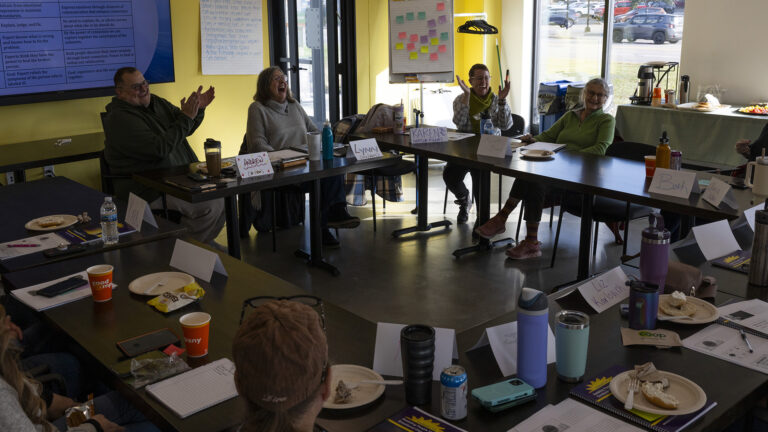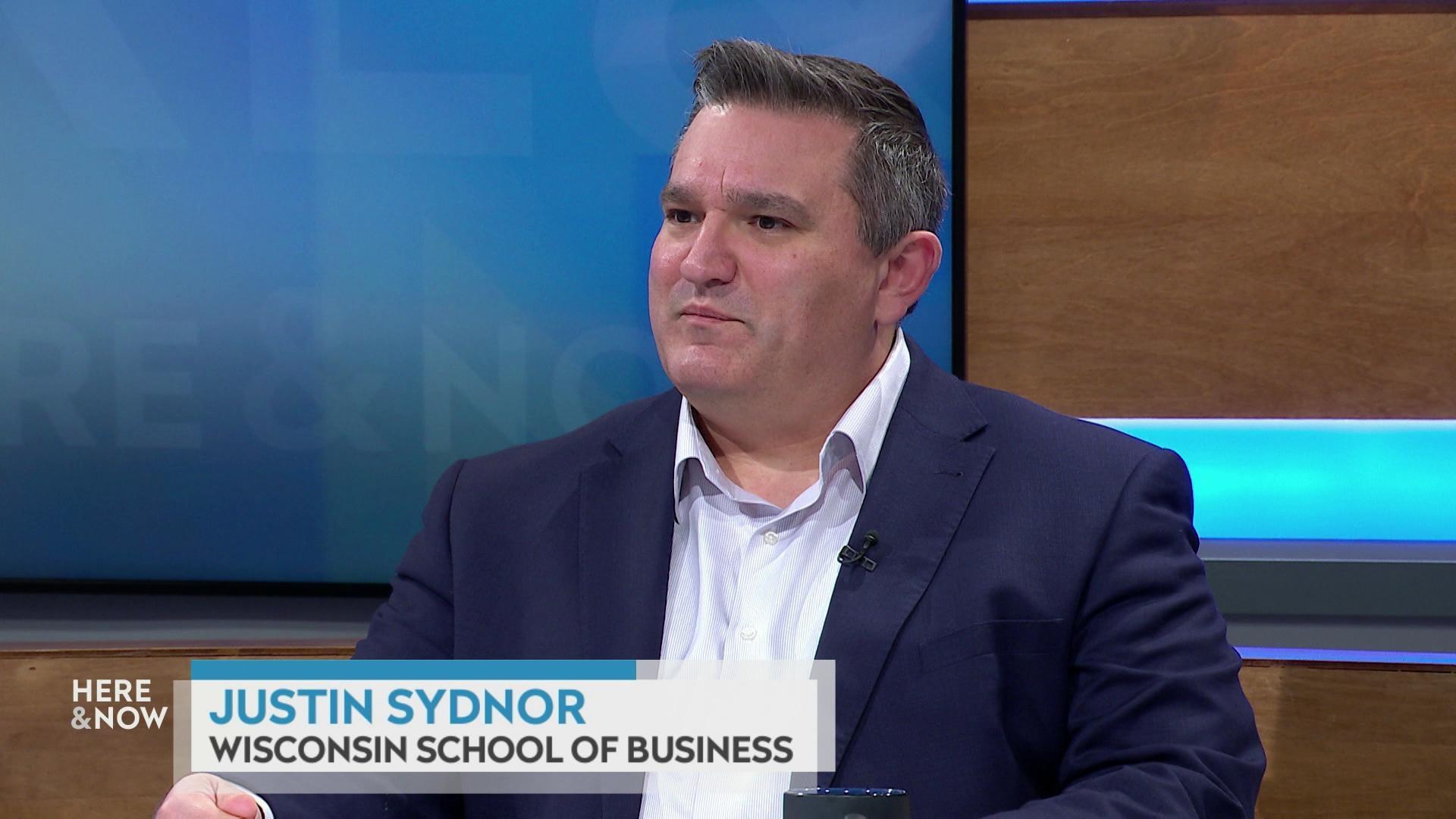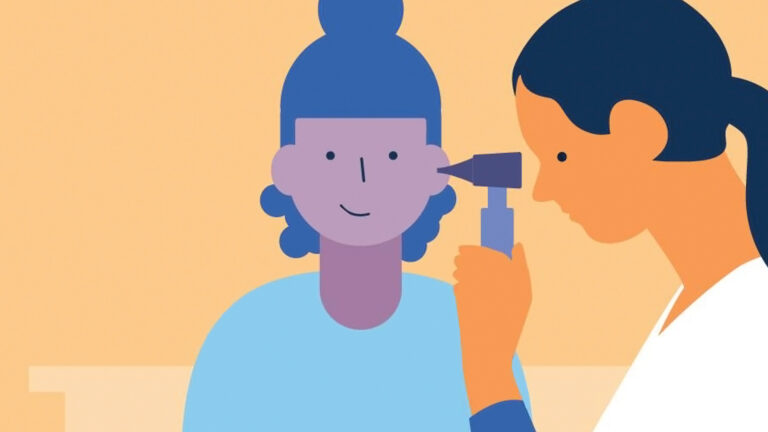Linda Hall on the mental health of Wisconsin high schoolers
By Frederica Freyberg | Here & Now
August 9, 2024
Wisconsin Office of Children's Mental Health Director Linda Hall describes the 2023 Youth Risk Behavior Survey's findings on anxiety, depression and effects of screen time among high school students.
VIDEO TRANSCRIPT
Frederica Freyberg:
Turning to education, the mental health struggles of Wisconsin's young people continue as screen times go up, and social supports go down. That's according to the latest Youth Risk Behavior Survey conducted by the Department of Public Instruction. As students outline the pressures they face, one said, quote, "People are my age that you consider Gen Z are struggling," "the technology you have built has given us more self-hatred, unachievable expectations, new mental illnesses, and has crushed our sense of communication," "please understand that we are trying our best to find ourselves," and, "it is difficult when the world that we look up to can be so cruel, and we feel that we need to go through it alone." To better understand these challenges, we turn to Linda Hall, director of the Wisconsin Office of Children's Mental Health. Thanks very much for being here.
Linda Hall:
It's my pleasure.
Frederica Freyberg:
So, what stands out as real trouble areas in children's mental health in Wisconsin?
Linda Hall:
Well, we know from the most recent Youth Risk Behavior Survey that anxiety is up. Half of our kids are feeling anxious all the time. About a third are depressed on a daily basis. They're feeling sad and hopeless, every day for two weeks. About 25% of kids are considering, seriously considering suicide. And if you, we start to look at subpopulations — marginalized groups — we see those numbers jump even higher. So unfortunately, these are trends that have been developing for more than a decade. We'd like to really see them turn around, but this is what we're dealing with right now.
Frederica Freyberg:
So I read that girls, in particular, report anxiety and depression. For anxiety, well over half of them. And your office said, quote, "Our girls are in trouble." What is driving this?
Linda Hall:
Well, girls identify academic pressures as number one, just like boys do. But they have a lot of unique stressors on them. There are so many messages for our girls about body image, and even suicide. When girls turn to social media, they are just being flooded with messages about being thinner, about ways to commit suicide. There's just a lot going on there. And we really, we really need to help them as best as possible curate their social media use, and do less of it, get away from it.
Frederica Freyberg:
Because your report also discusses the fact that there is increasing screen time outside of school work. How does that increasing time contribute to these things?
Linda Hall:
Well, in a number of ways. We know that it decreases the amount of time that kids spend in physical activity, which is a protective factor. It decreases the amount of time they sleep at night, which is also very important for mental well-being. And, it decreases the time that they're interacting with other students, and other people in their life on a personal basis. And those things are very healthy.
Frederica Freyberg:
What other external factors are driving overall mental health problems? You know, that kids worry about?
Linda Hall:
Well, when we look at all the data we can find about kids, we see that they do identify academic issues as number one. But after that, they look at things like their concern about climate change. They're concerned about school safety. I think that this new data shows that a very large percentage of kids don't feel safe at school. So, there's that, there's gun violence, and political divisiveness are all things that are adding up to their anxiety. And, a lot of that contributes to a lack of belonging. That's the other factor that we are looking at most of all, is belonging. Because we see that as being critical to how kids feel about themselves, whether they fit in at school, whether they show up at school — and then, whether they succeed at academics, which we know all of those things are important for their adult lives, and for their earning power and careers as adults.
Frederica Freyberg:
And so, when we talk about belonging in a school community, that's amongst peers and teachers?
Linda Hall:
Yes, it's both. Yes. There are, in Wisconsin, we now have over 300 peer-lead or student-lead mental health groups that are helping to work on this problem. They're learning about mental health, and making this an issue, helping their friends. We also see that a number of schools have a school relationship mapping activity that happens at the beginning of the year. Where they kind of map, are there supportive adults in the school that match up with these students? And if they're not, how can we make that happen?
Frederica Freyberg:
Because I understand that supportive adults are really important to student's mental health.
Linda Hall:
They are. We need more than parents to be engaged with kids. And some of those supportive adults are at school. It might be a teacher, it might be a school secretary, it might be a janitor. It can be lots of different people who are just having positive interactions. We know that simple interactions that last as little as 40 seconds, can make a difference in how a student feels, and reducing their anxiety.
Frederica Freyberg:
And we talk about all these really difficult things around mental health for our K-12 students in Wisconsin, but it's not as though this is a new thing. It's been enduring.
Linda Hall:
Yes, unfortunately these trends, these lack of belonging, the increased anxiety, the increased depression has been accelerating for many years now. And we know that screen times makes a difference. I think smart phones make a difference. There's a lot of study around that. How is that affecting our kids? And we really want kids, and their parents, to think about healthy brain development. You know, we're really wired for connection as people. That's how we work best, is when we are connected to people. So, we need to think not just about physical health, but mental health.
Frederica Freyberg:
What can the state do to help with this?
Linda Hall:
I think the number one thing is to increase sustainable funding for mental health supports at school. We know that we are in a shortage of professional mental health providers. But, there are many things that we can do at school. And, we can create positive climates where kids feel like they belong. We can support our academic teachers to be engaged in that activity, support their understanding of mental health. So, we need increased supportive funding for that, and you know, in part is because we know that of kids that actually get support for their mental health — 75% of it, get that at school. So, it's a critical place for us to invest in. And we know that investments that are made in the past have made a difference, but we need to make more.
Frederica Freyberg:
And what can families do?
Linda Hall:
You know, the number one thing probably for families around screen time is to create a family media plan. There are lots of tools for how to do that. But create a plan so that everybody in the family is being conscious of how much time they're spending on screens, and they're limiting it. And so, parents are modeling good screen time use. Also encourage kids to get out, get some physical activity. And to engage in an extracurricular activity. We know that extracurricular activities are a very strong protective factor for kids. So, that's really important. And for young people, think about what you're looking at online, and how much time you're spending online. Reduce your time online, and increase your time hanging out with friends.
Frederica Freyberg:
All right, good advice. Linda Hall, thanks very much.
Linda Hall:
Thank you.
 Passport
Passport











Follow Us